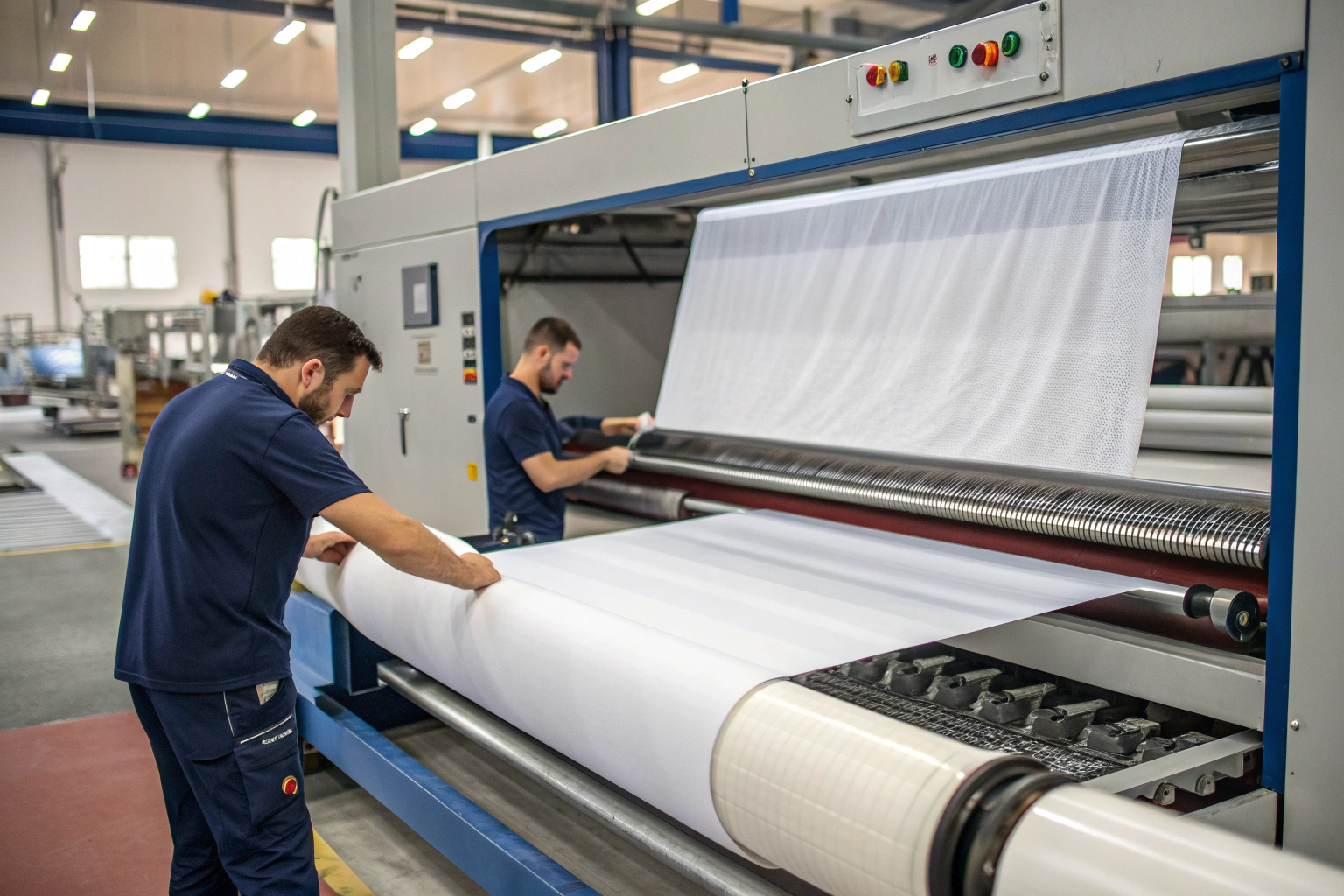As a fabric manufacturer with over two decades in the textile hub of Keqiao, I've seen countless finishing processes. Many clients, especially those focused on quality and aesthetics like our American buyers, ask about the techniques that give fabrics their final look and feel. One such critical, yet often overlooked, process is calendaring.
Calendaring is a mechanical finishing process where fabric is passed through heated rollers under high pressure to alter its surface properties. This process smooths the fabric, enhances its luster, controls its thickness, and can even imprint specific patterns. It's the secret behind the sleek shine of your favorite cotton sateen sheets or the silky smoothness of a high-quality poplin shirt. For anyone sourcing fabrics, understanding calendaring is key to specifying the exact hand feel and appearance you need for your garments.
Let's dive deeper into this essential textile finishing method and explore how it can benefit your next sourcing project.
How does the calendaring process work?
The magic of calendaring lies in its precise application of heat and pressure. At its core, the process feeds the fabric through a series of rollers, known as calenders. These rollers can be made from different materials, like hardened steel or elastic cotton, and can be heated to specific temperatures. The combination of roller type, temperature, pressure, and fabric speed determines the final effect on the textile.
This mechanical finishing technique is one of the final steps in fabric production. It physically modifies the fabric's surface without changing its fundamental composition. The primary goal is to achieve a smoother, more uniform, and often glossier appearance. This makes the fabric more appealing to the eye and pleasant to the touch, directly impacting the perceived value of the final product.
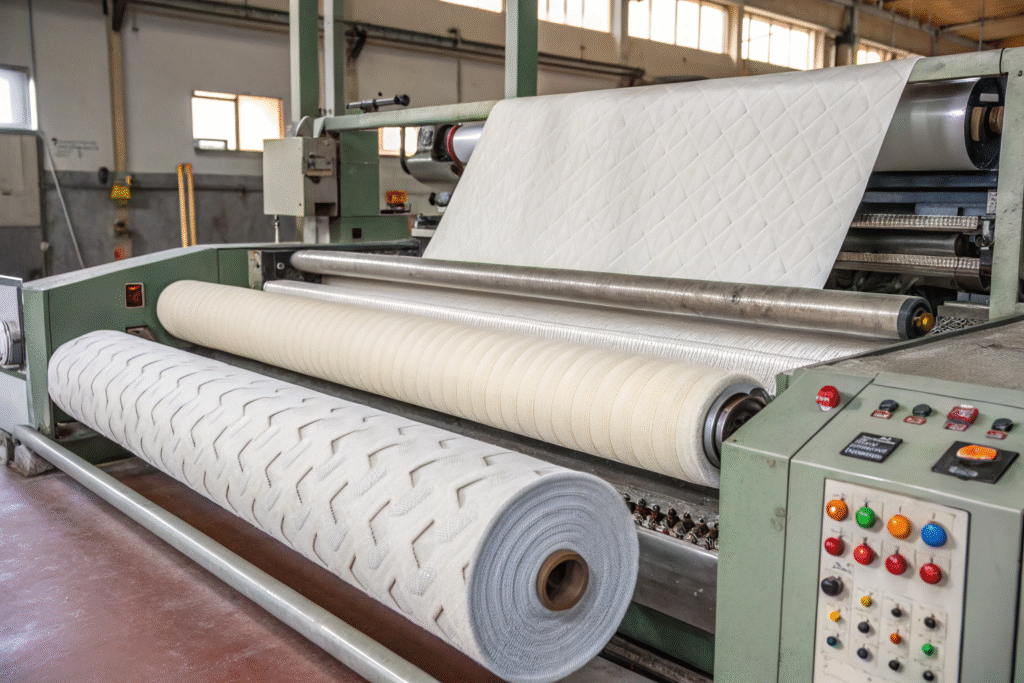
What are the main components of a calendaring machine?
A calendaring machine is not a simple press. It's an engineered system with key parts working in harmony. The heart of the machine is the calender bowls or rollers. Typically, a machine has a set of rollers stacked vertically. At least one roller is made of hardened, polished steel that can be heated. The opposing roller is often made of a softer, resilient material like compressed cotton or paper. This combination allows the hard roller to press the fabric surface against the compliant surface of the soft roller, creating a smooth, flat finish. The pressure application system is another crucial component, using hydraulic or pneumatic mechanisms to exert consistent and adjustable force across the entire fabric width. Finally, a precision control system manages the temperature of the heated rollers and the speed at which the fabric passes through the nip point, ensuring repeatable results batch after batch.
What types of effects can be achieved with calendaring?
Calendaring is incredibly versatile, producing a range of effects by simply varying the roller types and process parameters. The most common effect is schreiner calendaring, which uses a roller engraved with extremely fine lines to produce a soft, subdued luster on synthetic fabrics or linens, greatly enhancing their drape and aesthetic. For a glossy, mirror-like finish, friction calendaring is used, where the polished steel roller rotates faster than the fabric feed speed, polishing the surface through friction. Another popular effect is embossing, where a heated steel roller engraved with a pattern presses against a soft roller, permanently imprinting a raised or recessed design like a leather grain or geometric pattern onto the fabric. Understanding these options allows you to choose the perfect finish for your specific application, from elegant evening wear to durable home textiles.
Why is calendaring important for fabric quality?
Calendaring is far more than a cosmetic procedure; it's a vital step that defines the final product's quality and performance. For our clients in competitive markets like the US, where visual appeal and hand feel directly influence consumer purchasing decisions, a well-executed calendaring process can be a significant differentiator. It adds that final touch of refinement that elevates a good fabric to a great one.
The process fundamentally improves the fabric's usability and value. By compressing the fabric, calendaring can increase its density and make it more opaque, which is a critical factor for linens and shirting materials. The smoothing action lays down loose fibers, reducing pilling and creating a surface that is less prone to soiling. For our customers, this translates to garments that look premium from the shelf and maintain their new appearance longer, enhancing customer satisfaction and reducing returns.
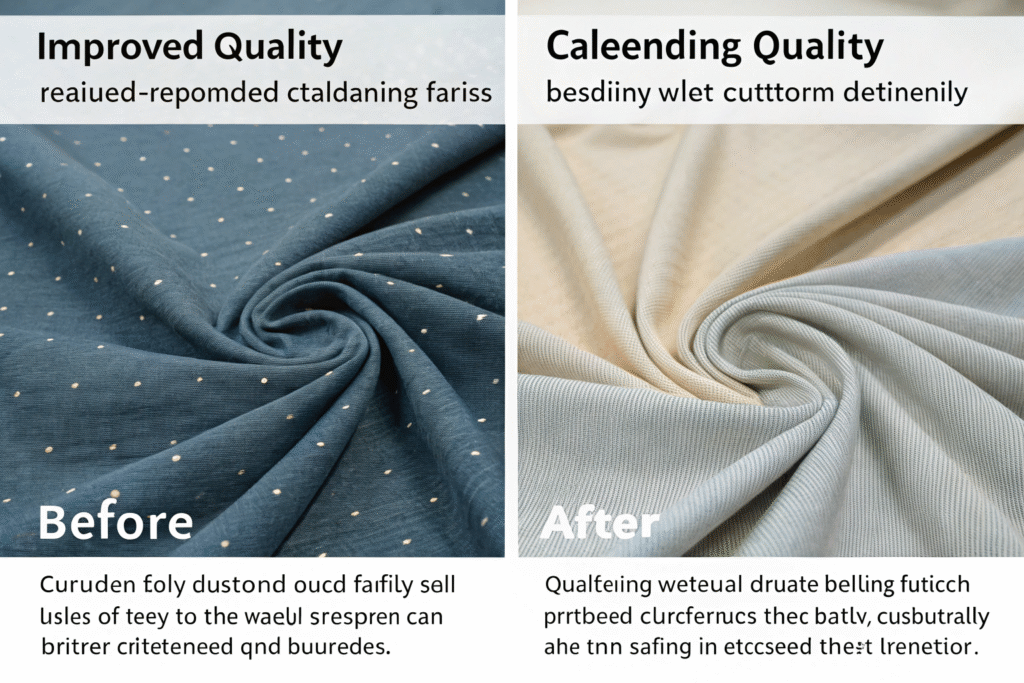
How does calendaring improve fabric appearance and hand feel?
The immediate impact of calendaring is on the fabric's aesthetics and tactile quality. The high-pressure rollers flatten the yarns and close the gaps between threads, resulting in a smoother, more uniform surface with a enhanced luster or sheen. This dramatically improves the visual appeal of the fabric, making colors appear brighter and more vibrant. The "hand feel" or handle of the fabric—how it feels against the skin—is also significantly upgraded. Calendaring produces a softer, silkier, and smoother texture. This is particularly important for natural fibers like cotton and linen, which can have a somewhat rough hand after dyeing and weaving. A superior hand feel is a key selling point for brands targeting the mid to high-end market segments.
What are the functional benefits beyond aesthetics?
Beyond making fabric look and feel better, calendaring offers several practical, functional benefits. One of the most important is the control over fabric thickness and dimensional stability. The process can precisely calibrate the fabric to a specific gauge, ensuring consistency for technical applications. By compressing the fabric structure, calendaring can also improve the fabric's wind resistance and reduce its air permeability, which is a desirable trait for coatings and outerwear. Furthermore, a smoother surface provides a better foundation for subsequent printing or coating processes, ensuring sharper print definition and more uniform coating application. These functional enhancements contribute directly to the performance and durability of the final product, meeting the stringent quality demands of global brands.
What are the different types of calendaring machines?
Not all calendaring is created equal. The specific outcome is heavily dependent on the type of machine and rollers used. As an integrated manufacturer, we have access to various calendaring technologies to meet diverse client needs. The choice of machine is a technical decision based on the fiber content of the fabric and the desired final effect.
The most basic division is between the number of rollers and their composition. A simple two-roll calender is common for standard smoothing. However, for more complex effects, multi-roll calenders with seven or even more rollers are used. The real differentiation, however, comes from the material of the rollers and how they are used in combination. Investing in the right type of calendaring is crucial for achieving the specific aesthetic that sets a garment collection apart.
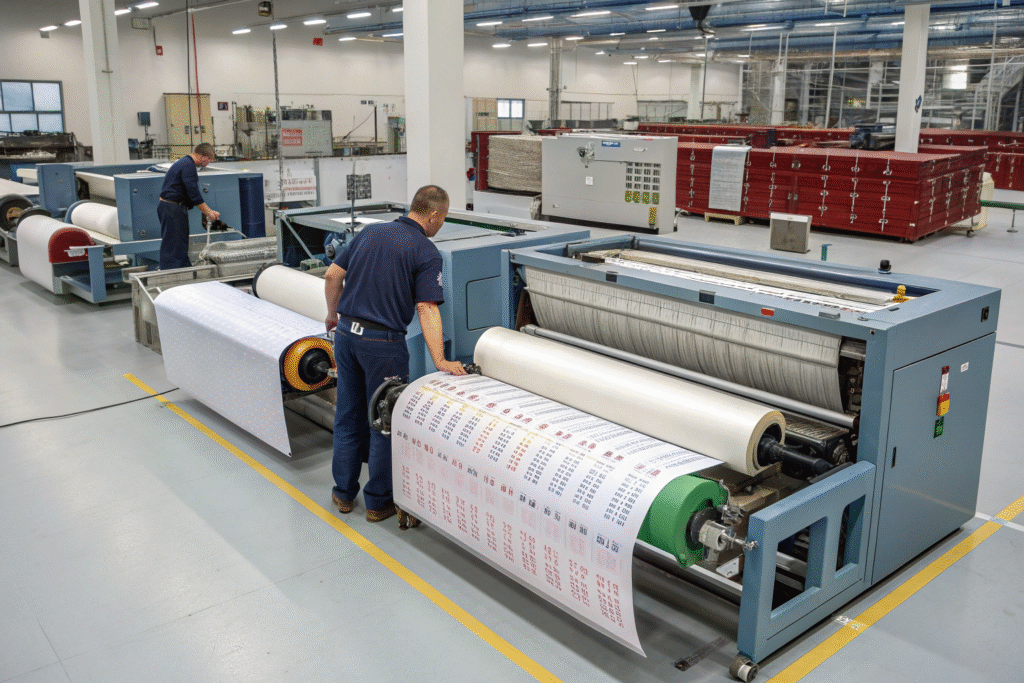
What is the difference between friction and schreiner calenders?
While both use heat and pressure, Friction Calenders and Schreiner Calenders produce distinctly different results. A Friction Calender typically has a three-roll system: a soft cotton roll, a hard steel roll, and a woolen or paper roll. The key is that the polished steel roll rotates at a much higher surface speed than the fabric. This friction polishes the fabric surface, creating a high-gloss, shiny finish, often used for sateens, chintz, and some poplins. In contrast, a Schreiner Calender uses a single steel roller engraved with hundreds of fine, diagonal lines per inch. This roller presses against a soft, resilient roller. The lines are so minute that they barely visible, but they crush the yarns in a way that creates a soft, silky luster without a high-gloss shine. It greatly improves the fabric's drape and is preferred for lightweight synthetics and linens where a subtle elegance is desired.
| Feature | Friction Calendering | Schreiner Calendering |
|---|---|---|
| Primary Effect | High-gloss, shiny surface | Soft, silky, subdued luster |
| Roller Type | Polished steel (rotating faster) & soft rollers | Steel roller with fine lines & soft roller |
| Ideal For | Sateen, Chintz, Poplin | Nylon, Taffeta, Linens, Umbrella Fabrics |
| Hand Feel | Very smooth, sometimes slightly stiff | Exceptionally soft and smooth |
How do embossing and swissing calenders work?
Embossing Calenders are designed to create three-dimensional patterns. Here, the hard steel roller is intricately engraved with a deep pattern (e.g., leather grain, paisley). This roller is heated and pressed against a soft, corresponding roller. The combination of heat and pressure permanently sets the pattern into the fabric, creating a textured effect that is both visual and tactile. This is widely used for synthetic leathers and decorative home textiles. On the other hand, a Swissing Calender or Smoothing Calender is the most basic type. It uses multiple rollers of alternating steel and compressed cotton, all rotating at the same speed. The goal is not to create gloss or pattern, but simply to smooth and flatten the fabric, yielding a pleasing matte finish. It's often used for high-quality cottons and linens where a natural, non-glossy look is required. Understanding these types allows for precise specification when developing new fabrics.
How to source fabrics with the right calendering finish?
Sourcing fabric with a consistent and appropriate calendering finish requires clear communication and a reliable supplier. From my experience working with international buyers, the challenges often arise from unclear specifications and a lack of understanding of how the finish behaves over time. Being proactive in your sourcing strategy can prevent these issues.
The first step is always to provide a physical reference sample. Describing a "slight sheen" or "soft hand" is subjective, but a reference sample gives the manufacturer a clear, tangible target. Secondly, discuss the functional requirements of the final garment. Will it be washed frequently? Does it need to maintain a crisp appearance? The answers will guide the manufacturer in choosing not only the type of calendaring but also whether it should be combined with a durable resin finish to lock in the effect.
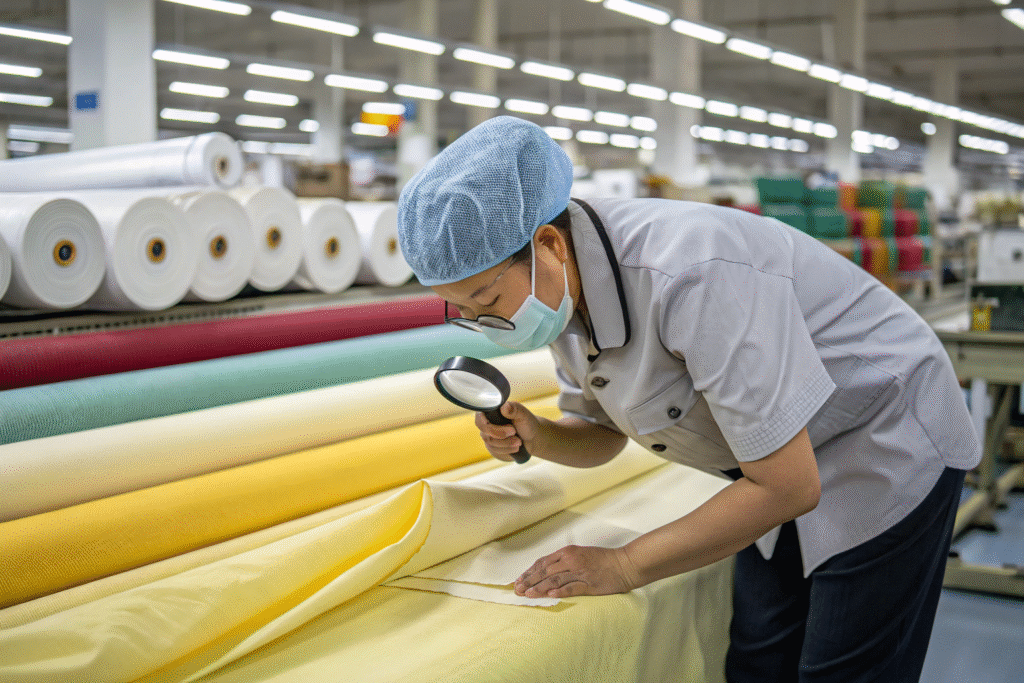
What questions should you ask your fabric supplier about calendaring?
To ensure you get the finish you pay for, you must ask your supplier specific, technical questions. First, inquire about the wash fastness of the calendering finish. Ask directly: "Will this smoothness and luster survive the first wash, or is it a temporary finish?" This is critical for apparel. Second, ask about the machinery. "What type of calendaring machine will you use for my order (e.g., friction, schreiner, swissing)?" A professional supplier will know this and be transparent. Third, request a test report from their quality control lab. Reputable suppliers, like us with our CNAS-accredited lab, can provide data on smoothness, abrasion resistance, and color fastness post-calendaring. This due diligence separates partners who understand quality from those who just move meterage.
Why is partnering with an integrated manufacturer crucial?
Partnering with a vertically integrated manufacturer, especially one like ours based in the Keqiao textile cluster, is the most effective way to control the calendaring outcome. We manage the entire process, from fiber sourcing to weaving and finishing, including calendaring, in-house or through tightly controlled cooperatives. This integration means the calendaring process is not an afterthought but is planned from the initial fabric development stage. Our dedicated QC team conducts inline inspections during calendaring to ensure consistency. Furthermore, our location gives us access to the latest calendaring technologies and expertise in the world's largest textile market. For you, this translates to fewer delays, consistent quality across large orders, and a partner who can troubleshoot finishing issues effectively, saving you time and protecting your brand's reputation.
Conclusion
Calendaring is a powerful and versatile textile finishing process that goes far beyond simple pressing. It is a precision engineering technique that defines the final appearance, hand feel, and functional properties of the fabric. From creating a high-gloss chintz to a soft-luster linen or an intricately patterned faux leather, calendaring adds significant value and is a key differentiator in today's competitive apparel and home textiles markets. Understanding the different types—like friction, schreiner, and embossing—empowers you to make informed sourcing decisions and specify the exact finish your designs require.
Ultimately, achieving the perfect calendered finish hinges on a strong partnership with a knowledgeable and transparent fabric supplier. It requires clear communication, reference samples, and a supplier with the technical expertise and quality control systems to deliver consistent results batch after batch. If you are looking to develop fabrics with a specific hand feel, luster, or pattern for your next clothing line, we have the integrated capabilities and experience to bring your vision to life. For a direct conversation about your project, please contact our Business Director, Elaine, at elaine@fumaoclothing.com. Let's co-create the perfect fabric for your brand.

